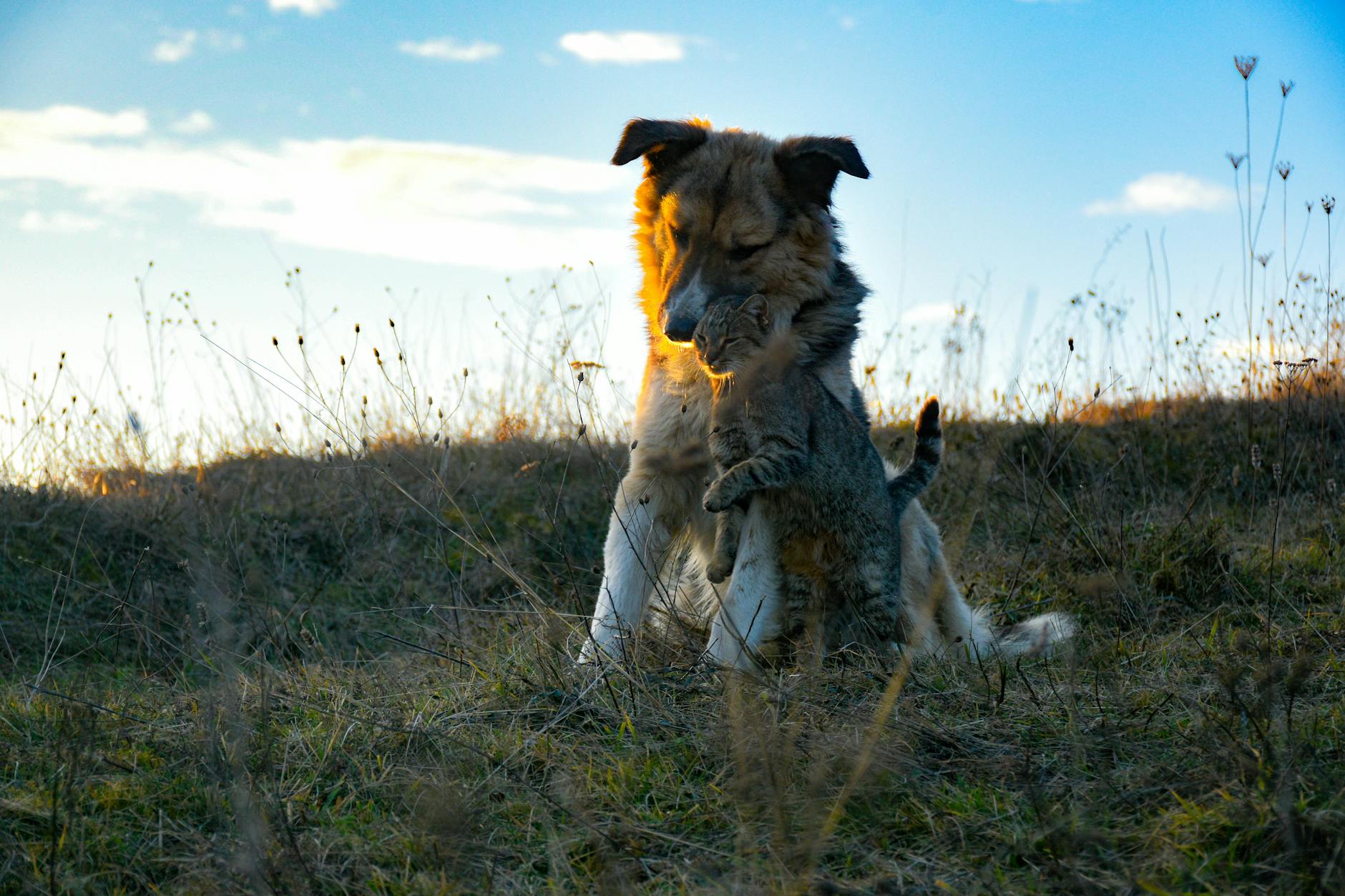Can Technological Innovations Improve Animal Welfare in Australia?

Improving Livestock Welfare
The integration of technology in animal care is reshaping the landscape of livestock welfare, much like the research at the Melbourne Zoo's veterinary facilities. One noteworthy advancement is the development of training collars dogs, designed to enhance the behaviour and safety of animals without inducing stress. These collars use adjustable settings that cater to unique behavioural needs, providing a humane and efficient solution to managing livestock.
In addition, innovative solutions such as a hidden dog fence are contributing significantly to enhancing livestock environments. This technology involves an underground boundary that ensures animals stay within designated areas while giving them the freedom to roam within safe perimeters. Such technology is invaluable for farmers who are concerned about the well-being and safety of their animals.
Moreover, there is an increasing emphasis on the use of eco-friendly options, like the citronella dog collar. This type of collar releases a harmless spray of citronella, which reinforces positive behaviour in a non-intrusive way. The citronella dog collar echoes sustainable practices evident in biodiversity research initiatives at the Royal Botanic Gardens Victoria.
Each of these technological advancements not only improves animal welfare but also aligns with the eco-conscious values many Australian farmers hold. By embracing these innovations, we ensure that livestock management is both humane and environmentally responsible.
Enhancing Companion Animal Care
GPS Trackers for Pets
Incorporating gps dog tracking into pet care is increasingly popular among tech-savvy animal lovers in Melbourne. The innovative research from centres at the University of Melbourne reveals the utility of GPS trackers in enhancing the safety of our pets. These devices offer a precise location of your pet, ensuring that they are easily trackable during outings, especially in bustling areas like the Royal Botanic Gardens Victoria.
Through scientific analyses, it's evident that GPS trackers provide real-time updates and create virtual boundaries, alerting you when your pet leaves the designated area. This functionality is crucial for those who enjoy outdoor activities with their pets, offering peace of mind that they can be swiftly located if they wander too far. Furthermore, data collected from these devices can inform behavioural studies and help pet owners like Daniel make informed decisions about pet safety.
Non-Intrusive Training Tools
Exploring non-intrusive training tools as part of companion animal care has transformed how pet owners handle behaviour training. Unlike traditional methods that might compromise animal welfare, modern tools employ scientifically driven techniques to promote learning without causing distress. The advancement in dog travel accessories further illustrates this trend, providing convenience and security during journeys.
Training tools are designed to cater to the instinctive behaviours of pets, allowing adjustments that are considerate of their emotional well-being. As the Melbourne Zoo's veterinary facilities advocate, this compassionate approach to training improves quality of life for our furry companions, combining cutting-edge research with practical application.
Wildlife Conservation Efforts
Tracking Wildlife Movements
In recent years, advancements in technology have opened up new pathways for wildlife conservation, and one effective method is tracking wildlife movements. Researchers at institutions like the University of Melbourne have been instrumental in employing GPS and telemetry systems to gather critical data on the migration patterns and habitats of Australia's native species. These anti bark collars are a different kind of technological innovation aimed at pet training but are unrelated to wildlife movement tracking. Still, the underlying technology highlights how GPS elements can be adapted for various animal welfare efforts beyond domestic uses.
Drones for Habitat Monitoring
Drones represent another frontier in wildlife conservation, revolutionizing how scientists access and evaluate ecosystems. At the Melbourne Zoo's veterinary facilities, drones facilitate remote observation of animal habitats, providing real-time data while minimising human interference. By capturing aerial imagery and video, drones help map and track environmental changes affecting biodiversity. This approach is especially crucial for monitoring the remote and often inaccessible landscapes that characterise much of Australia's wilderness.
Anti-Poaching Technologies
Poaching remains a persistent threat to wildlife, necessitating cutting-edge solutions to combat it effectively. Surveillance systems equipped with thermal imaging and AI detection software have started to gain traction in Australian conservation projects. These systems serve as vigilant sentinels, alerting authorities to unusual activities that could indicate illegal poaching. While tools like a snuggle puppy provide comfort and companionship at home, the broader spectrum of technology ensures our native wildlife is protected against unlawful threats, thus fostering a safer ecological balance.
Eco-Friendly Innovations
Sustainable Product Materials
The shift towards sustainable materials in pet products has become increasingly important for environmentally conscious consumers. For example, when selecting an anti bark collar, it is essential to consider products made from eco-friendly materials like biodegradable plastics or recycled fabrics. These choices help reduce the environmental footprint, aligning with values like sustainability and conservation. Many companies are now focusing on creating pet products that are both effective and gentle on our planet, reflecting a growing market trend toward responsible consumption.
Energy-Efficient Devices
Energy efficiency is a key consideration for technological devices, including pet accessories designed to improve behaviour. With the rise of intelligent products like the anti barking collar, energy efficiency is critical to ensure long-lasting performance without excessive energy consumption. Devices that utilise advanced battery technology or solar power can contribute significantly to reducing energy use, thereby supporting broader environmental goals. This technology mirrors other sustainable innovations found in institutions like the University of Melbourne, which also focuses on energy-efficient research in various industries.
Recycling and Waste Reduction
Recycling and waste reduction strategies are vital in the development and lifecycle management of pet products. When choosing items such as anti-bark collars, look for brands that incorporate recyclable packaging and components, as this can significantly cut down on waste. Encouraging manufacturers to adopt circular economy practices further enhances ecological benefits. These environmental considerations are akin to initiatives at the Royal Botanic Gardens Victoria, where biodiversity research supports waste reduction and recycling, ensuring that consumers like Daniel Roberts receive products that align with their eco-friendly values.
Tackling Shared Obstacles in Tech-Driven Animal Welfare
Harmonising Technology with Nature
There exists a delicate balance in integrating technology within our natural ecosystems. At the Melbourne Zoo's veterinary facilities, specialists are using advanced analytics to ensure tech solutions for animals do not disrupt habitats but enrich them. Researchers from the University of Melbourne advocate for environmental risk assessments to fine-tune innovations, ensuring they're not only efficient but also in sync with the biological rhythms of wildlife. Notably, Australia's rich biodiversity demands an approach where technological implementations complement, rather than compete with, the environment.
Navigating Adoption Challenges
As promising as these tech advancements are, resistance to new methods can slow progress. Through the engagement efforts of biodiversity research initiatives at the Royal Botanic Gardens Victoria, educational programs address common myths surrounding the digitalisation of animal welfare. The tech-savvy young adult demographic is instrumental here. Empowering this group with clear success stories encourages wider adaptation of technology, such as automated pet doors that enhance security while promoting freedom for our furry companions.
Safeguarding Data and Privacy
In the digital age, safeguarding the privacy of both animals and their human companions is paramount. The latest studies from the University of Melbourne delve into maintaining the integrity of data security frameworks, ensuring that the use of GPS and drone technologies remains ethical. As innovative as these solutions are, they come with the responsibility of managing data meticulously, protecting sensitive information whilst still harnessing the power of these cutting-edge tools.


